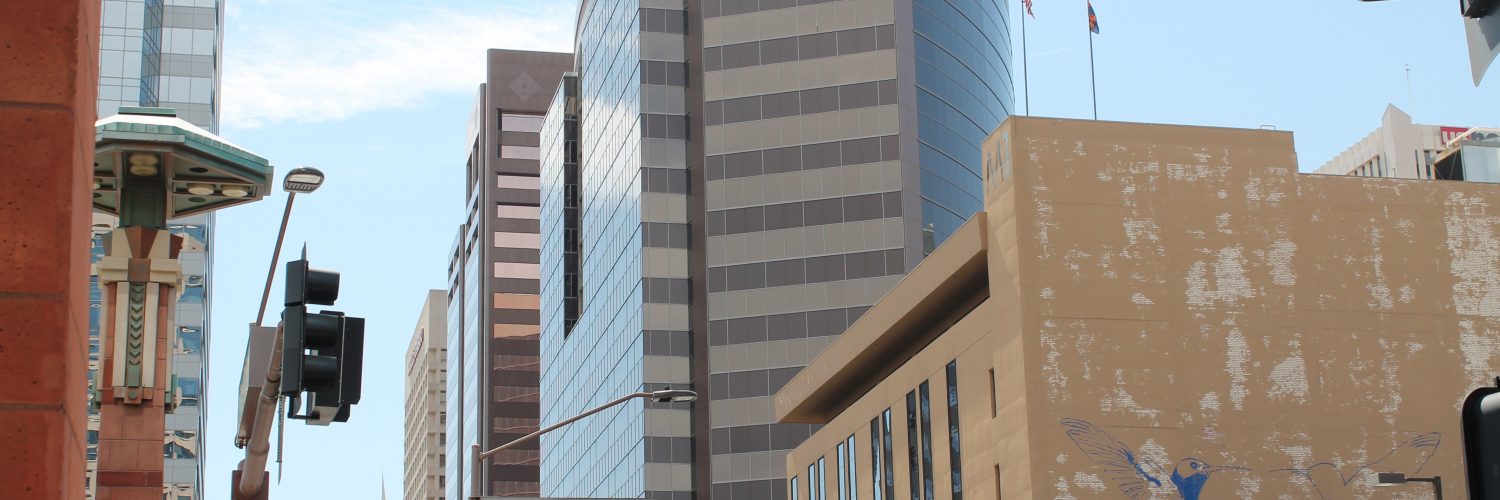Phoenix and Buckeye are the fastest-growing cities in the United States, according to a report from the U.S. Census Bureau.
Phoenix gained 25,288 new residents from July 1, 2017 to July 1, 2018 — the most of any city in the U.S. — for a total population of 1,660,272 in 2018, according to the census data.
Buckeye grew at the fastest rate of any U.S. city with a population of 50,000 or more between July 1, 2017 and July 1, 2018, gaining 5,813 new residents at a growth rate of 8.5 percent, according to census data.
Deanna Kupcik, president and CEO of the Buckeye Valley Chamber of Commerce, said affordable housing is the primary factor drawing new residents to Buckeye.
“Our housing market has gone sky-high, and we’re issuing more permits now than we did back in ’07, when it was at its peak before,” Kupcik said. “We’ve got good builders, lots of room to build, and so that’s… what it is, and it’s a wonderful place to live.”
Many new residents, especially those from out-of-state, visit the chamber office asking for information about living in Buckeye, Kupcik said.
“We’re getting a lot of California people, a lot of Pacific Northwest people… a lot of Midwest people that retired, especially after the winter they’ve had and continue to have,” she said. “Usually, the ones that are moving from other places in the state already know about the area.”
Phoenix is seeing a lot of growth, too. Phoenix is the fourth most popular living destination for millennials as well, according to a recent report.
Two-thirds of the Phoenix population arrived from out-of-state, said Eric Jay Toll, communications manager for Community and Economic Development at the city of Phoenix.
“Phoenix has an amazing climate, an affordable cost of living and a high ranking in quality of life,” Toll said. “We have the largest, second-largest and 10th-largest city parks in the world in Phoenix.”
The Phoenix metropolitan areas is one of the few major metro areas in the U.S. where the average wage can qualify for the average home, whereas most cities have a housing affordability gap that requires two or more people’s income to qualify for a home, Toll said.
“We have a vibrant downtown, exceptional education opportunities and a business environment making it easy to start and succeed with a new company,” Toll said. “Since most Phoenicians are from elsewhere, it’s a welcoming environment to newcomers.”
Phoenix saw its largest number of new residents coming from California, and the second-largest group is from Asia, Toll said.
“That datum is a testament to our growing bioscience and technology sectors,” he said. “Phoenix has completely pivoted its employment base from retail, real estate and construction to manufacturing, technology, financial services and biosciences and health care. The BBC reported in the last year, Phoenix had the third-largest financial services and financial technology workforce in the U.S., just behind second-ranked Wall Street and sector leader Dallas.”
Despite growth slowing in the national manufacturing industry, Phoenix manufacturers are struggling to find enough workers to fill open positions, Toll said. Manufacturing jobs in the city have increased every month for the past two years, he said.
Buckeye, a West Valley suburb, still depends heavily on agriculture, but the housing market provides another major source of income for the city, Kupcik said. Large manufacturers play a vital role in the West Valley, too, she said.
“We’ve got our huge Walmart distribution center, and then the Cardinal Glass manufacturer, and we’re getting a new manufacturer that’s bought an existing building,” Kupcik said. “Economic development-wise, we are right on the cusp of landing some big stuff.”
Kupcik said Buckeye did not take as big a hit as other places during the recession that began in 2007. Many of the planned housing developments that were already approved at the time the recession hit have since been resold and developed, and more are in the works, Kupcik said.
“We lost a few businesses, but not a lot, because our population had just started to explode,” she said. “We kept the people, so the businesses that were here were able to stay here… they still struggled, but we didn’t lose them.”
Now, Buckeye is adding new retail and services it has never seen before, such as car washes, gyms and the city’s first Starbucks coffee shop, Kupcik said. And Buckeye is poised to be home to one of the state’s first stores from German supermarket chain ALDI.
Kupcik said Buckeye expects to continue growing at a similar rate, especially when other parts of the Valley are being built-out to the point where they cannot grow anymore. The West Valley is “where it’s at,” she said.
“It’s a great place to live and raise your family, and wonderful people,” she said.
Kupcik said Buckeye has a pro-business city council and a “great business climate” encouraging people to relocate there.
“We welcome the growth, but we want to do it right and plan for the future,” she said. “Everything that we do right now isn’t planning for 2019; it’s planning for 2050. It’s trying to get all the building blocks in place so that it progresses smoothly.”
Phoenix expects to see continued growth as well, Toll said. For one, the city added 25,000 new residents last year, but in the same period it added almost 70,000 new jobs, he said.
The focus for the Phoenix City Council, and for Community and Economic Development, is making sure affordable housing is available to the city’s workforce, Toll said. For example, the city council requires any apartment development seeking city assistance to offer at least 10 percent of its residential units with affordable, workforce-priced rents, he said.
“We expect to continue seeing nation-topping growth because we are gaining significant numbers of new high-value jobs in Phoenix and across the state,” Toll said. “Companies are finding the Phoenix area productive workforce, quality of life and stable business environment to be very attractive for expansion. Local company expansion plans and the number of new companies looking at the market continue to be very robust.”
















Add comment